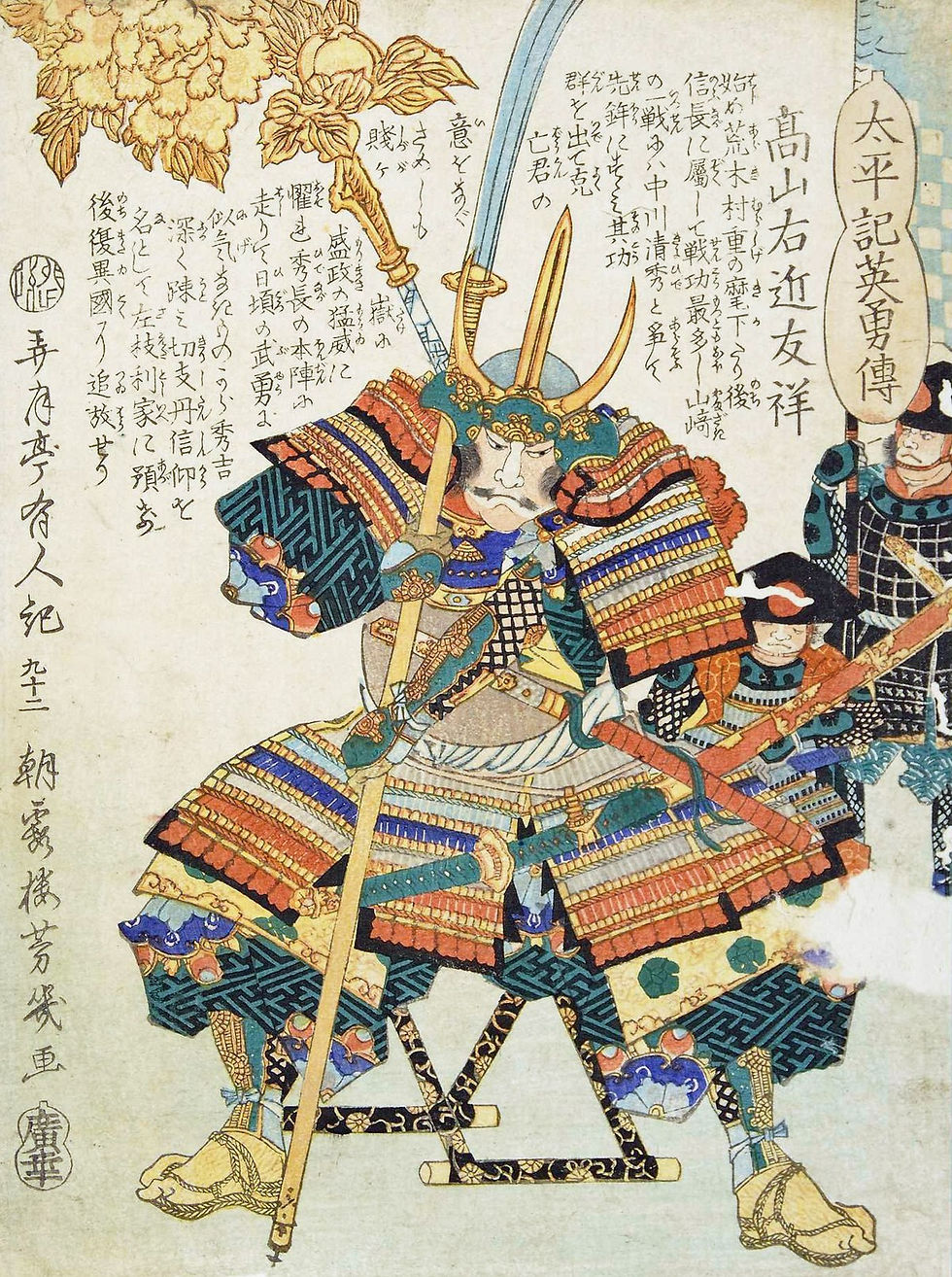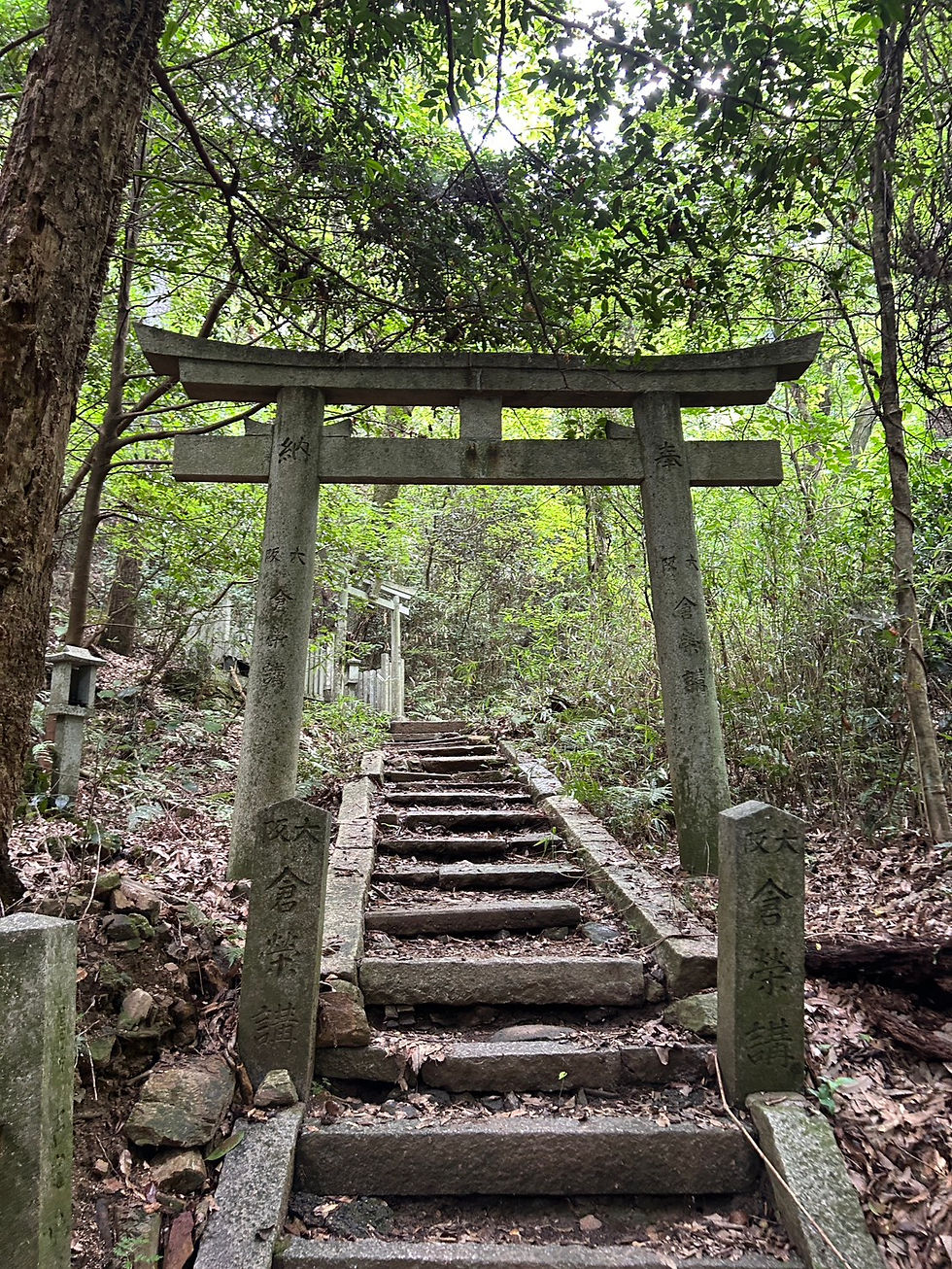The Mansion of the Exiled Daimyo Takayama Ukon.
- Phillip Jackson

- May 6, 2024
- 2 min read
In the sake brewing area of the castle town of Fushimi, Kyoto by the head offices of the brewing company Gekkeikan is a hidden short lane, shrouded by trees and bushes, a set of stones in the ground lead to a dead end. And at the dead end is a signboard explaining that in this area in the early 1600's stood the mansion residence of the Daimyo Takayama Ukon, and the Fushimi Jesuit Church.

According to a map of the castle town of Fushimi drawn around 1600, the mansion of Takayama Ukon (1552-1615) stood just to the east of this site (where now a preschool playground is). The residence was also used as the Jesuit Church from 1604 to 1614. The site land is now owned by Gekkeikan Brewery.
Fushimi became a centre of economic and political power in 1592 when Toyotomi Hideyoshi built his castle in the area. The Christian faith, of which Takayama Ukon was a follower, was spreading rapidly, but this rapid growth also brought about fear, leading to persecution.
Takayama was forced to flee Japan because of the prohibition of Christianity issued by the Tokugawa Shogunate in 1614. He moved to Manila, where he died the following year.

Also known as Dom Justo Takayama, the samurai suffered a violent fever 44 days after arriving in Manila, he died of illness at midnight, it is said on the 3rd or 5th February 1615. The Spanish government gave him a Christian burial with full military honors befitting the status of a daimyō. His remains were buried in the Jesuit church there, and he is the only daimyō buried on Philippine soil.

Access - The location is close to Chushojima Keihan Station, and is by the Gekkeikan Head Officies in Fushimi.




Comments